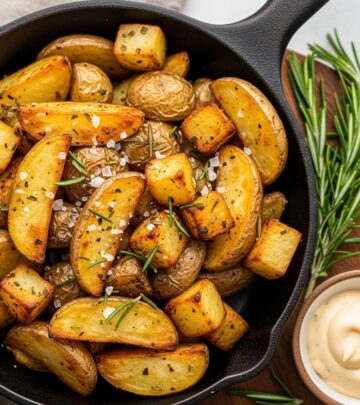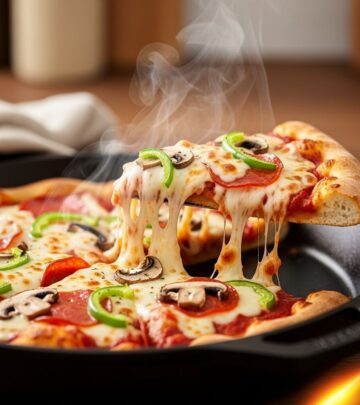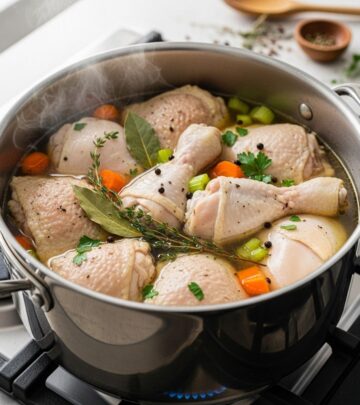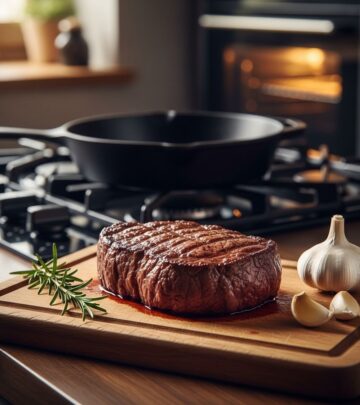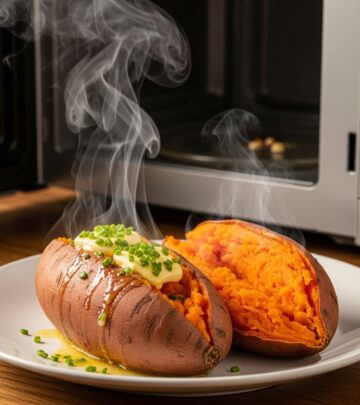Granulated vs. Confectioners’ Sugar: Differences, Uses, and Baking Science
Unlock smoother icings and fluffier cakes by matching sugar types to your baking goals.
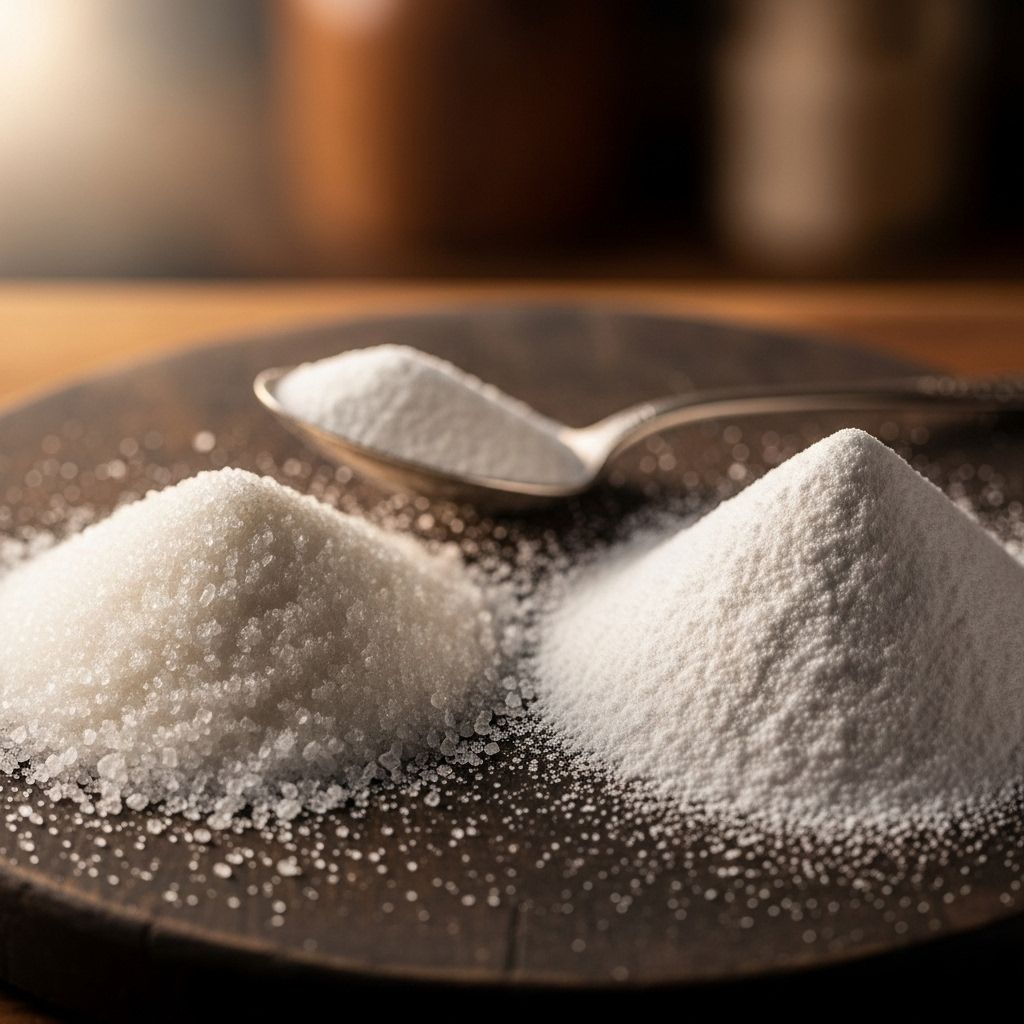
Sugar is a fundamental ingredient in baking, but not all sugars are created equal. Granulated sugar and confectioners’ sugar (also known as powdered or icing sugar) differ in appearance, texture, composition, and their effects on culinary outcomes. Understanding how to use each—and why recipes call for one over the other—unlocks better baking and tastier desserts. This guide explores deep into the science, practical uses, and best practices for these staple kitchen sugars.
What Is Granulated Sugar?
Granulated sugar is the most common sweetener found in home and professional kitchens. Characterized by medium-sized crystals, it is easily scoopable, pourable, and dissolves at a predictable rate. Also known as table sugar, this type is derived from either sugarcane or sugar beet but is refined into pure sucrose regardless of source. The crystals are dry, free-flowing, and slightly sparkly, making them ideal not just for sweetness, but also for providing structure and aeration in recipes.
- Source: Sugarcane or sugar beet.
- Texture: Medium, sand-like crystals.
- Typical Uses: Cookies, cakes, beverages, jams, and candies.
- Properties: Adds volume, caramelizes under heat, creates structure in baked goods.
What Is Confectioners’ (Powdered) Sugar?
Confectioners’ sugar, also called powdered sugar or icing sugar, is granulated sugar that has been finely ground to a powder, usually to a fineness denoted as “10x”—meaning the sugar passes through a fine mesh ten times. A small amount (usually 3–5%) of cornstarch is often added to prevent clumping and caking, enhancing shelf life and absorption resistance on moist surfaces. The result is a soft, fluffy, and ultra-fine sugar, perfect for glazes, frostings, and dusting desserts.
- Source: Finely ground granulated sugar, with added cornstarch.
- Texture: Powdery, light, and soft.
- Typical Uses: Icing, frostings, whipped cream, dusting pastries, and confections.
- Properties: Quick-dissolving, smooth texture, absorbs less into cake surfaces when dusted.
How Are They Made?
Granulated Sugar
Granulated sugar is produced by extracting juice from sugarcane or sugar beet, clarifying it, then boiling the juice until crystals form. The crystals are separated from the liquid (molasses) and sometimes refined further to produce consistently white sugar with minimal impurities.
Confectioners’ Sugar
Confectioners’ sugar is made by grinding granulated sugar to a fine powder. Commercially, this process happens with specialized mills. Cornstarch (or sometimes tricalcium phosphate) is added to maintain free-flowing powder and to prevent caking—key for storage and consistent texture. Home cooks sometimes can recreate confectioners’ sugar by processing granulated sugar in a blender, but the result is typically less fine and lacks the anti-caking agent.
| Type | Composition | Texture | Special Additives | Main Culinary Uses |
|---|---|---|---|---|
| Granulated Sugar | 100% refined sucrose | Medium-grain, free-flowing | None | Baked goods, beverages, jams, candies |
| Confectioners’ Sugar | ~95–97% sucrose, 3–5% cornstarch | Powdery, ultra-fine | Cornstarch (anti-caking) | Frostings, icings, whipped cream, dusting |
Other Names and Grades
Confectioners’ sugar goes by several names:
- Powdered Sugar: Standard American term; often used interchangeably with confectioners’ sugar.
- Icing Sugar: Common in the UK and Commonwealth countries.
- 10x Sugar: Describes the finest grind; “6x,” “4x,” and “12x” are available industrially.
The “x” notation refers to how many times the sugar is ground or sieved. For most home baking, you’ll encounter 10x, which is ideal for frostings and dusting.
Key Differences Between Granulated and Confectioners’ Sugar
- Texture: Granulated is grainy, while confectioners’ is soft and powdery.
- Solubility: Confectioners’ sugar dissolves much faster and more completely in cold, room-temperature, or low-moisture settings.
- Appearance: Confectioners’ sugar creates a smooth, glossy finish; granulated can be gritty if not dissolved properly.
- Behavior in Baking: Substituting one for the other changes taste and texture, especially noticeable in delicate items like meringues, whipped creams, and frostings.
- Caking Resistance: Cornstarch in confectioners’ sugar keeps it fluffy and prevents clumps, making it ideal for dusting and decorating.
While both are fundamentally sucrose, their forms make them suitable for very different culinary needs.
Why Does Cornstarch Matter?
The addition of about 3–5% cornstarch to confectioners’ sugar is critical not just for anti-caking, but also for how powdered sugar behaves in recipes:
- Stabilizes meringues: Cornstarch helps hold water, keeping egg white foams from collapsing too soon.
- Prevents absorption: Dustings of confectioners’ sugar remain visible atop cakes and pastries instead of soaking in.
- Texture improvement: In unbaked icings and glazes, it keeps things smooth and lump-free.
However, this can slightly alter the taste and texture of recipes compared to plain powdered sugar, especially with high-fat ingredients.
How Each Sugar Impacts Baking and Cooking
Understanding which sugar serves which purpose is crucial to achieving the right texture and taste:
Baked Goods (Cookies, Cakes, Muffins)
- Granulated sugar: Contributes structure and crunch. Creaming it with butter creates air pockets, helping cakes and cookies rise and develop a fluffy crumb.
- Confectioners’ sugar: Used in cookies for tenderness and melt-in-your-mouth consistency (such as in shortbread and Mexican wedding cookies).
Frostings, Icings, and Glazes
- Confectioners’ sugar: The only practical choice for smooth, lump-free buttercreams, glazes, and icings that don’t require cooking. It dissolves instantly in liquids and fats, creating silkiness.
- Granulated sugar: Not recommended unless the recipe involves subsequent boiling (like in Italian meringue or cooked caramel icings).
Meringues and Whipped Cream
- Confectioners’ sugar: Stabilizes egg foams and whipped cream thanks to cornstarch’s ability to hold water. It helps meringues hold their volume and whipped cream maintain its peaks longer.
- Granulated sugar: Useful for classic French and Italian meringues, where it’s slowly dissolved into egg whites over time or heat.
Dusting and Finishing
- Confectioners’ sugar: Best for sprinkling over pastries, doughnuts, pancakes, or cakes owing to its ultra-fine, instantly dissolving form. The trace of cornstarch prevents melting into the surface.
- Granulated sugar: Used on top of muffins, breads, or desserts to form a crisp, sugary topping in the oven; not suitable for dusting after baking.
When (and When Not) To Substitute One Sugar for the Other
While both sugars are pure sucrose, they cannot always be substituted freely:
- Volume differences: One cup of granulated sugar weighs more than one cup of confectioners’ sugar due to all the air in the powdered form. Substituting by weight is more accurate but texture and moisture absorption may still differ.
- In recipes where sugar must dissolve completely (glazes, frostings): Only confectioners’ sugar will create a smooth product. Granulated sugar will leave grittiness.
- In creamed baked goods (cakes, cookies): Granulated sugar is needed to provide structure. Using confectioners’ will make baked goods more tender but may cause them to spread more and not hold shape.
Takeaway: Only swap sugars in an emergency, and expect changes in texture, structure, and sometimes flavor.
Scientific Effects on Texture and Structure
- Creaming ability: Granulated sugar traps air into butter, resulting in light, airy cakes and cookies. Confectioners’ sugar, in contrast, produces a denser, melt-in-the-mouth effect.
- Solubility: The tiny particles of confectioners’ sugar dissolve rapidly, which is why it works in frostings without cooking. Granulated sugar requires more moisture and heat to dissolve completely.
- Absorption and shelf life: Cornstarch in confectioners’ sugar helps absorb some moisture and acts as a preservative; critical for icings and dusted desserts that need to survive longer.
Popular Recipes: Which Sugar to Use?
| Recipe Type | Recommended Sugar | Why |
|---|---|---|
| Classic Cakes (yellow, chocolate, layer) | Granulated | Creates structure and aeration via creaming |
| Shortbread or Mexican Wedding Cookies | Confectioners’ | Yields delicate, crumbly, melt-in-the-mouth texture |
| Buttercream Frosting (uncooked) | Confectioners’ | Dissolves instantly for a silky, smooth result |
| Whipped Cream | Confectioners’ | Stabilizes foam, prevents weeping with cornstarch |
| Lemonade, sweetened beverages | Granulated or superfine | Dissolves in liquid; superfine speeds the process for cold drinks |
| Caramel or Candies | Granulated | Resists caking; melts smoothly under heat for candy-making |
Can You Make Your Own Confectioners’ Sugar?
In a pinch, it’s possible to make a basic version of confectioners’ sugar at home by blending granulated sugar in a spice grinder or high-powered blender. For every cup of granulated sugar, add 1 tablespoon of cornstarch and blend until ultra-fine. However, the result may not be as powdery or smooth as commercial 10x sugar, and the texture won’t match exactly, especially for delicate icings or dustings.
Final Considerations for Best Baking
- Always use the sugar type specified by your recipe for the best result.
- For smooth, creamy textures in uncooked frostings or glazes, choose confectioners’ sugar.
- For structure and proper rise in cakes and cookies, stick to granulated sugar.
- Baking by weight instead of volume yields more precise, consistent results.
- Store confectioners’ sugar in an airtight container to prevent clumping, even though it contains an anti-caking agent.
Frequently Asked Questions (FAQ)
What is the main difference between granulated and confectioners’ sugar?
Granulated sugar consists of medium-sized crystals, while confectioners’ sugar is finely ground and contains added cornstarch to prevent clumping. They behave differently in recipes and are not freely interchangeable.
Can I substitute confectioners’ sugar for granulated sugar in baking?
Direct substitution will change the texture, structure, and sometimes taste of your baked goods, as granulated sugar adds needed aeration and structure. Use substitutes only when absolutely necessary and adjust expectations accordingly.
Is confectioners’ sugar the same as powdered or icing sugar?
In the United States, confectioners’, powdered, and icing sugar all refer to the same product—finely ground sugar with a bit of cornstarch added. Names differ globally, but composition is similar.
Why does confectioners’ sugar clump, and how can I fix it?
Despite anti-caking agents, moisture can still cause confectioners’ sugar to lump. Sieve or whisk clumpy sugar before adding to recipes for best results.
Which sugar is best for lemonade or cocktails?
Superfine granulated sugar (or simple syrup) is preferred because it dissolves quickly. Confectioners’ sugar may alter taste slightly due to cornstarch content and should be avoided in clear drinks.
How should these sugars be stored?
Store both types in airtight containers in a cool, dry place. Granulated sugar can last indefinitely, while confectioners’ sugar’s shelf life is aided by cornstarch but can still suffer if exposed to humidity.
Summary Table: Granulated vs. Confectioners’ Sugar
| Feature | Granulated Sugar | Confectioners’ Sugar |
|---|---|---|
| Texture | Coarse, crystalline | Fine, powdery |
| Ease of Dissolving | Slow (needs heat/liquid) | Fast (instant in moisture) |
| Additives | None | Cornstarch (anti-caking) |
| Main Uses | Baking, sweetening beverages, candy | Frosting, glacé, dusting, whipped cream |
| Substitution | Not freely interchangeable | Not freely interchangeable |
References
Read full bio of Sneha Tete







